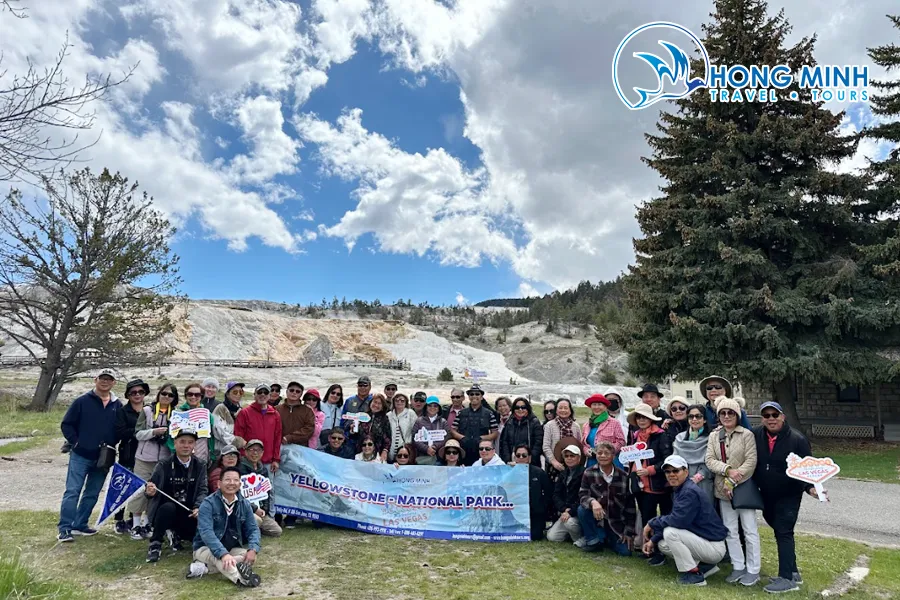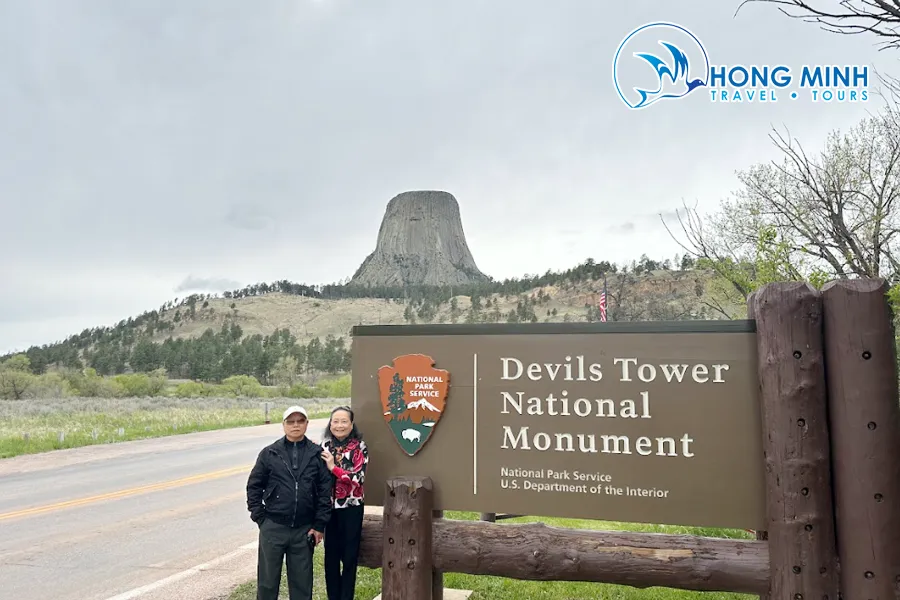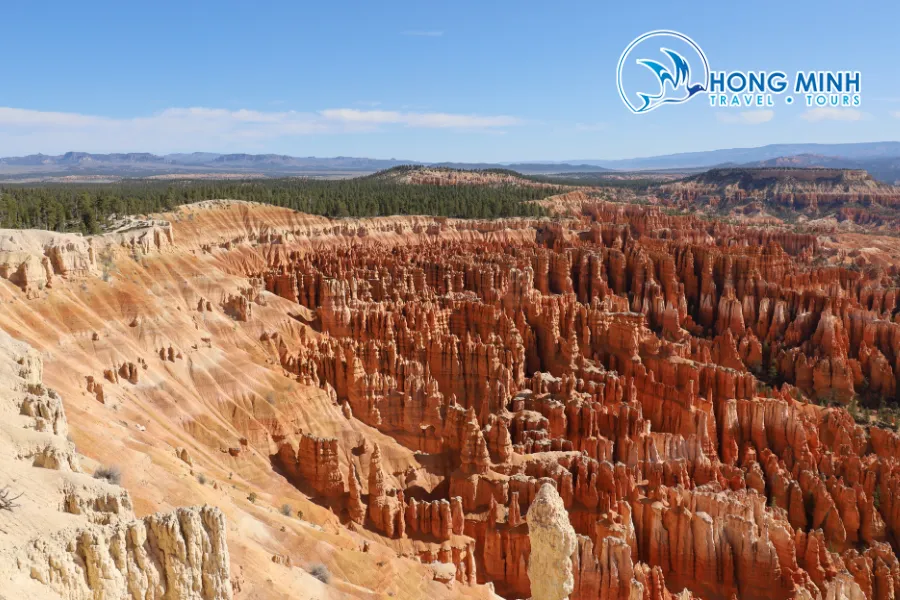Wyoming, a mountain state in the Western United States, is renowned for its untouched and majestic natural beauty. From towering rocky mountains and vast grasslands to mystical hot springs and deep canyons, Wyoming is a true paradise for landscape photography enthusiasts. If you’re planning a photography trip to Wyoming, this article will share helpful tips to capture the most stunning and unique moments of this land.
Why Wyoming is a Paradise for Landscape Photographers
Wyoming boasts an incredible diversity of landscapes, creating countless creative opportunities for photographers. It is home to Yellowstone National Park, the world’s first national park, famous for its geysers, hot springs, and the magnificent Grand Canyon of the Yellowstone. Additionally, Devil’s Tower National Monument, a colossal basalt column, rises from the plains, creating an impressive and unique scene.
Beyond the famous national parks, Wyoming hides many other gems such as the majestic Grand Teton Mountains, the poetic Yellowstone Lake, and the pristine Bighorn Canyon National Recreation Area. Each location offers a distinct beauty, from the grandeur and magnificence to the peacefulness and tranquility, catering to all your photography preferences and styles.
Tips for Wyoming Landscape Photography
To capture impressive landscape photos of Wyoming, you need to equip yourself with certain knowledge and skills. Here are some essential tips for Wyoming landscape photography that you shouldn’t miss:
Ideal Timing
The best times to photograph Wyoming’s landscapes are summer and fall. Summer (June – August) offers warm, pleasant weather, clear blue skies, and bright sunshine, perfect for outdoor activities and landscape photography. Autumn (September – October) is captivating with the vibrant yellow and red colors of the foliage, creating romantic and poetic scenes.
Besides the season, the time of day also plays a crucial role. The “golden hour,” the short period after sunrise and before sunset, is when the light is most beautiful. The soft, warm light of the golden hour creates long shadows, adding depth and drama to the photograph. The “blue hour,” the period just before sunrise and after sunset, also offers soft, cool light with a magical blue hue, ideal for capturing tranquil and romantic landscapes.
Essential Equipment
To effectively photograph Wyoming’s landscapes, you need to prepare the following equipment:
- Camera: A DSLR or mirrorless camera with a large sensor will help you capture high-quality images with good detail and wide dynamic range.
- Lenses: A wide-angle lens (e.g., 16-35mm) is indispensable for capturing the vast, majestic landscapes of Wyoming. A telephoto lens (e.g., 70-200mm or 100-400mm) is also useful for capturing close-ups of details or wildlife from a distance.
- Tripod: A tripod helps stabilize the camera, especially necessary when shooting long exposures, HDR photos, or in low-light conditions.
- Filters: A polarizing filter helps reduce glare, increase contrast, and make colors more vibrant. An ND (neutral density) filter reduces the amount of light entering the lens, allowing you to shoot long exposures even in bright light.
- Spare batteries and memory cards: Ensure you have enough spare batteries and memory cards so you don’t miss any beautiful moments.
- Rain gear and waterproof bags: Weather in Wyoming can be unpredictable, so prepare rain gear and waterproof bags to protect your equipment.
Best Photography Locations in Wyoming
Wyoming has countless stunning landscape photography locations. Here are some suggestions you shouldn’t miss:
Yellowstone National Park
Yellowstone is a priceless treasure for landscape photographers. It features the Grand Canyon of the Yellowstone with the magnificent Lower Falls, the vibrant Grand Prismatic Spring, the regularly erupting Old Faithful geyser, and the vast, blue Yellowstone Lake.

When photographing in Yellowstone, take time to explore different areas of the park to find unique angles. Don’t forget to visit the Norris Geyser Basin with its strange hot springs and mud pots, or the Mammoth Hot Springs area with its white travertine terraces.
Devil’s Tower National Monument
Devil’s Tower is a must-visit destination for landscape photography in Wyoming. This giant basalt column rises from the plains, creating an incredibly impressive and unique image.

To capture the best photos of Devil’s Tower, visit at sunrise or sunset. The sidelight will highlight the unique shape of the tower and create long shadows across the grassland. You can photograph panoramic views of Devil’s Tower from afar or find close-up angles to explore its unique geological structure.
Other Areas
Besides Yellowstone and Devil’s Tower, Wyoming has many other wonderful landscape photography locations, such as:
- Grand Teton Mountains: Majestic mountains with sharp peaks, clear lakes, and vast grasslands.
- Yellowstone Lake: The largest high-elevation lake in North America, with pristine and peaceful beauty.
- Bighorn Canyon National Recreation Area: A deep canyon with towering cliffs and the winding Bighorn River.
- Bryce Canyon National Park (partially in Utah, near Wyoming): Although Bryce Canyon is mainly in Utah, it is very close to the Wyoming border and is an excellent destination to combine with your landscape photography trip. Bryce Canyon is famous for its unique hoodoo rock formations, creating a magical and magnificent scene.

Composition Tips and Photography Techniques
To create impressive Wyoming landscape photos, you need to master some composition tips and photography techniques:
- Use Leading Lines: Leading lines are a powerful compositional element that helps guide the viewer’s eye into the photo and create depth. Leading lines can be roads, rivers, rows of trees, or any other element with a straight or curved shape.
- Rule of Thirds: Divide the frame into 9 equal parts with two horizontal and two vertical lines. Place important subjects at the intersections or along these lines to create a balanced and harmonious composition.
- Shoot at Sunrise and Sunset: As mentioned above, the “golden hour” is the time of day with the most beautiful light. Take advantage of the soft, warm light of the golden hour to photograph Wyoming’s landscapes.
- Shoot HDR: HDR (High Dynamic Range) technique helps you capture photos with a wide dynamic range, preserving details in both highlights and shadows. This technique is particularly useful when shooting landscapes with high contrast, such as sunrise or sunset scenes.
Conclusion
Wyoming is an amazing destination for anyone passionate about landscape photography. With its untouched, majestic, and diverse natural beauty, Wyoming promises to give you unforgettable photography experiences and unique works of art. Hopefully, these Wyoming landscape photography tips in this article will help you feel more confident on your journey to explore and capture the beauty of this land. Prepare your camera, plan your trip, and start your Wyoming landscape photography adventure now!